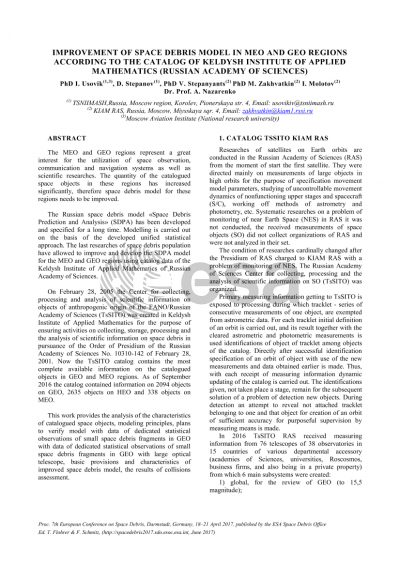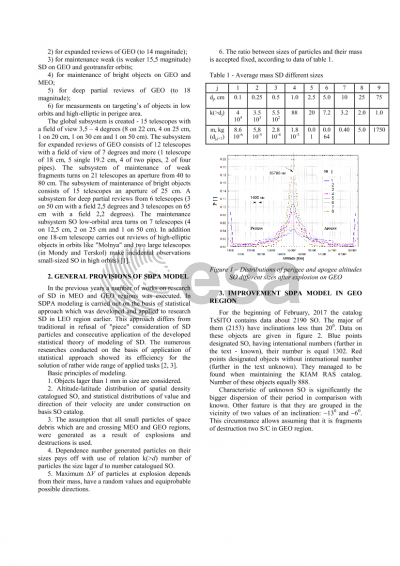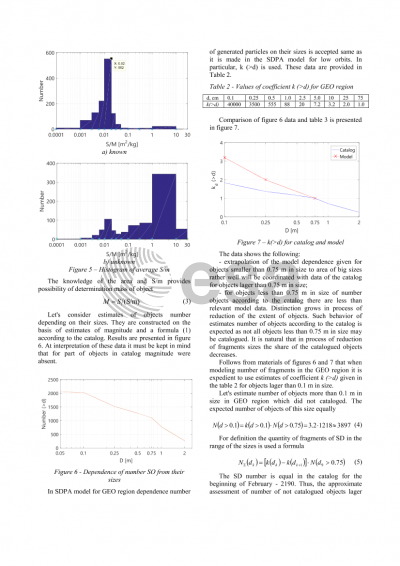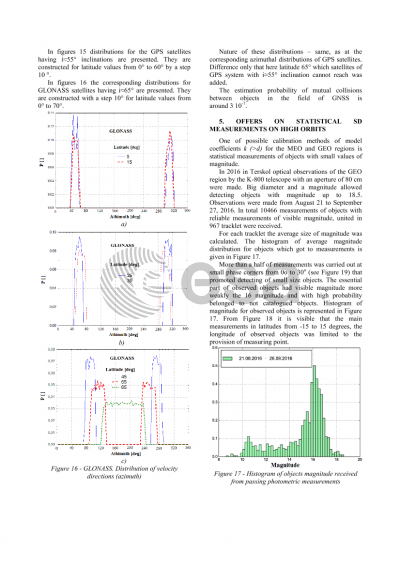Document details

Abstract
The MEO and GEO regions represent a great interest for the utilization of space observation, communication and navigation systems as well as scientific researches. The quantity of the catalogued space objects in these regions has increased significantly, therefore space debris model for these regions needs to be improved.
The Russian space debris model «Space Debris Prediction and Analysis» (SDPA) has been developed and specified for a long time. Modelling is carried out on the basis of the developed unified statistical approach. The last researches of space debris population have allowed to improve and develop the SDPA model for the MEO and GEO regions using catalog data of the Keldysh Institute of Applied Mathematics of Russian Academy of Sciences.
On February 28, 2005 the Center for collecting, processing and analysis of scientific information on objects of anthropogenic origin of the FANO/Russian Academy of Sciences (TsSITO) was created in Keldysh Institute of Applied Mathematics for the purpose of ensuring activities on collecting, storage, processing and the analysis of scientific information on space debris in pursuance of the Order of Presidium of the Russian Academy of Sciences No. 10310-142 of February 28, 2001. Now the TsSITO catalog contains the most complete available information on the catalogued objects in GEO and MEO regions. As of September 2016 the catalog contained information on 2094 objects on GEO, 2635 objects on HEO and 338 objects on MEO.
This work provides the analysis of the characteristics of catalogued space objects, modeling principles, plans to verify model with data of dedicated statistical observations of small space debris fragments in GEO with data of dedicated statistical observations of small space debris fragments in GEO with large optical telescope, basic provisions and characteristics of improved space debris model, the results of collisions assessment.
Preview










